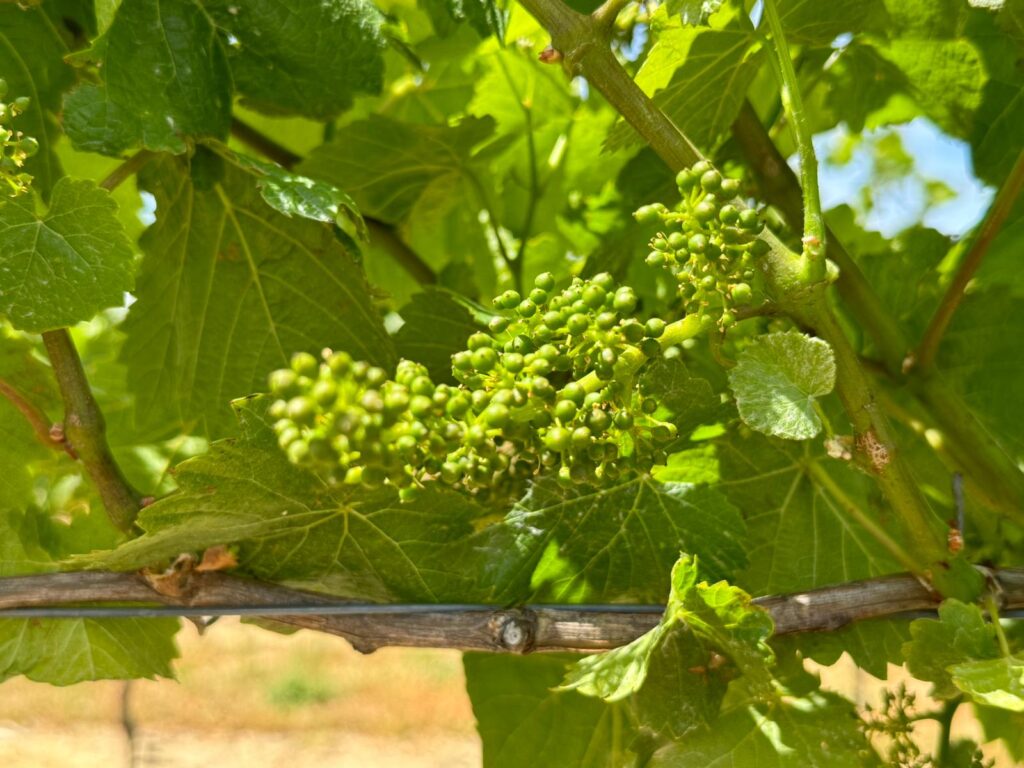
How do we make our wine at McArthur Ridge?
Part science, part artistry, our winemaking process involves expertise, patience and passion. Whether you’re a connoisseur or simply appreciate a fine wine, knowing a bit about how we make our wine at McArthur Ridge will no doubt add an extra touch of satisfaction.
Our Chief Winemarker, Matt Connell, tells us how it’s all done.
It starts with a plan
At the start of the growing season, our team gathers to discuss their aspirations for the next vintage. This will determine which blocks are targeted for which wines, as well as the work schedule required to ensure the best quality fruit for each type of wine.
Part of the skill – and beauty – of winemaking is that it is a process of constant adjustment. Variation to the initial blueprint is often necessary so that the best result can be achieved. Climate, soil, disease pressure and crop load all play roles in how the flavour of the grapes develops and, ultimately, how we make our wine.
We have good taste
Closer to harvest (autumn), we spend more time in the vineyard tasting the fruit and making note of their profiles. Although our team makes decisions based on flavour, we also like to have the numerical information from past vintages to compare.
Samples are done at the winery to gather all the actual numbers, like the sugar levels of the fruit and other technical parameters. Having numbers from year to year is helpful, especially in a really stunning year, as it allows for a comparison of those parameters.
This process ensures there is both a written history and a mental taste history of what the fruit was like in the past.
The term ‘clones’ refers to each type of pinot noir. Each clone has different flavour profiles and characteristics, such as a tighter bunch structure or in some instances a more open bunch structure. A distinct ‘backbone’ clone is selected, complemented by three or four other clones, to give the wine complexity and a better taste.
Harvesting only the best
How our fruit is picked is an important part of how we make our wine. McArthur’s Pinot Noir is made from hand-picked grapes, which actually makes a significant difference in taste.
Firstly, it allows us to be selective and to choose only the best fruit. It also eliminates most of the leaves and stems, which are more likely to be missed by machine harvesters.
The grapes then go through a de-stemmer before being transferred to refrigerated tanks and held there for five days. This builds colour and flavour.
Fermentation
The tanks are either inoculated with selected cultured yeast or begin fermentation naturally with wild yeast. Yeast convert sugar to alcohol over time and also bring out the various flavour compounds in the grapes. During primary fermentation we allow the tank to warm to the early thirties and gently push the grapes below the wine in tank a couple of times a day to keep them wet. this helps build flavour.
Each cuvee or batch is tasted daily and once the wine is dry and there is no sugar remaining we decide to drain the tank and press the remaining skins.
Pressing and ageing our wine
During this aging process the wine does though malolactic fermentation, whereby malic acid is converted to lactic acid, resulting in a softer, taste and silky mouthfeel to the wine.
Once primary fermentation has finished, we remove the free run to a holding tank and then physically dig out the remaining grape skins by hand. These are then pressed and combined with the free run wine and allowed to settle for a period in tank before being transferred to French oak barrels.
After this, the final stages of the magic happen: the aged wine is tasted, notes are made on each barrel, and then we start playing with blends to create a familiar yet slightly distinct-to-vintage flavour.
Our wine can then be filtered and bottled.
However, there are slight variations between how we make our red and white wines. Contrary to the above process, white wines are not destemmed before they are pressed; whole bunches go into the press, with the stems allowing the juice to flow more freely out of the press.
Each wine for our McArthur, Southern Tor and Brassknocker labels is made with the passion and attention to detail that has come to be synonymous with our award-winning wines.
Make sure to shop our great collection.

